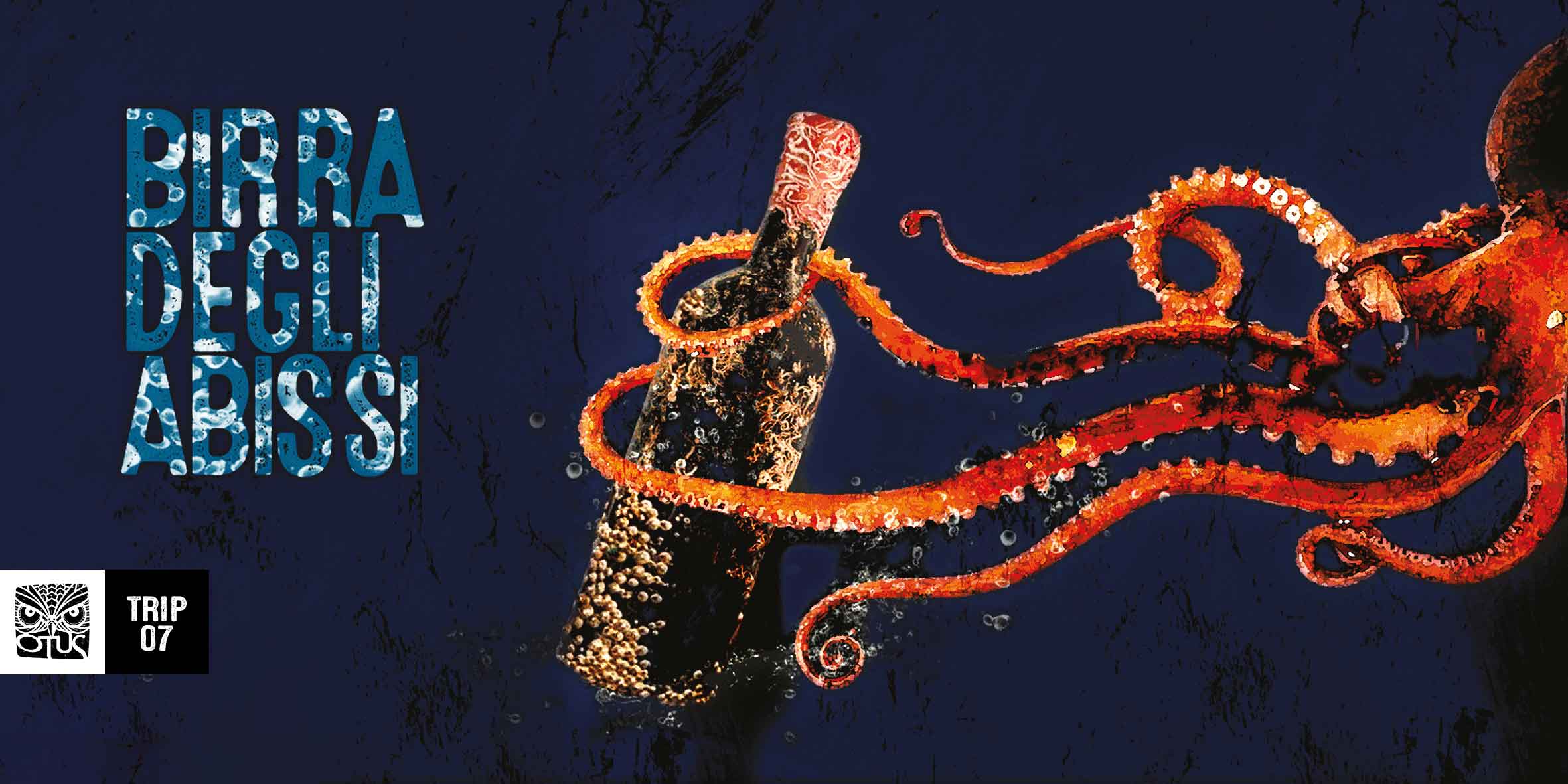
Pirate’s beer aged in the abyss
A scuba diver explored a wreck that sank centuries ago, among the remains he found an crate of ancient beer bottles that merged with the sea vegetation, covered by sharp shellfishes and to his great surprise, he found that that they were still undamaged.
It seems a scene of the movie Pirates of the Caribbean, only Captain Jack Sparrow is missing, but it is a real occurrence.
The story we are about to tell you is set in the Nineties and takes us to the Eastern seas, in the Bass Strait, between Australia and Tasmania and involves brewers and their creativity. But first things first: we are talking about the recent practice of “aging” beer at the bottom of the sea.
Aging beer in the sea: an idea that involves brewers and beer-aficionados.
It seems that brewers have as much creativity as other craft categories; in the last twenty years, for example, a new brewing practice has been experimented here and there which is particularly fascinating: stocking bottles in the sea, at a certain depth, to age beer in particular environmental conditions. A practice that has already obtained success also in the wine sector, with the spreading of the so-called underwater cellars, with some relevant commercial examples in the Italian market.
The basis of this process is surely the idea of some brewers that seabed, at a certain depth, thank to constant temperatures and no sunlight, represents a favourable environment to maintain and value beer organoleptic qualities.
Beer aging in the abyss has a historic precedent, the story we are telling below is as curious as surprising.
Sydney Cove ship beer has been preserved for two centuries at the bottom of the sea.
In 1796 the English colonial company Campbell & Clark commissioned to Sydney Cove a shipping lane from India to Australia, precisely from Kolkata to Port Jackson (now Sydney harbour). The load – with wood, corn and stocks, among which wine, liquors and beer – had never reached its destination because the ship ran ground and sank on 9th February 1797 off the Northern coast of Tasmania, near Preservation Island.
In the Nineties, when the marine archaeologist Mike Nash and his team rescued Sydney Cove wreck, among the more or less perished goods, 26 bottles of beer were found undamaged.
The event aroused curiosity: scholar and researchers from Queen Victoria Museum & Art Gallery from Launceston carried an accurate analysis on residual yeast samples and found it still alive. At this point the Australian brewery James Squire, in collaboration with the museum, started a difficult but stimulating adventure: to rebrew the ancient ale starting from the recovered yeast.
“The yeast they offered us was particularly unpredictable, but it wanted to live. […] So, after several attempts, we chose an English recipe from the Eighteenth century”. [Hydon Morgan, brewmaster – quote from La Repubblica, 03-05-2018]
After some unfruitful attempts, in 2018 Morgan proceeded with the first brew of Wreck Preservation Ale, a porter beer obtained with a yeast from the Eighteenth century. According to the brewer Stu Korch, the result is wonderful:
“Controlling the yeast was not easy. […] We paid particular attention while extracting and growing it in a beer that could enhance its unique characteristics”. [Stu Korch from James Squire brewery – quote from The Wall Street Journal – 20-05-18]
Those, who had the pleasure to taste it, describe it as a malty and dark beer with blackcurrant and spicy hints. Is it a suggestion or is it an objective product qualification? We asked Alessandro Reali, OTUS brewer, what is his opinion:
“The environmental conditions in which beer ages can affect its organoleptic qualities. This depends on the specific brewing characteristics and the planning of the refining process: it is necessary to take care of every detail, from aging time to preservation temperature, to thermal range of the container, etc. An evaluation of the effects deriving from different sea environments is essential. Testing is a milestone of thee craft brewing sector: without curiosity and risk there would not have been and there won’t be innovation. Recovering a centuries-old yeast is a work of great value because it can widen our knowledge. Regarding taste… A beer tasting is not only a technical matter, but it involves the emotional and cultural sphere, the desire to have a new sensory experience. A bottle full of shellfish and sea rests is undoubtedly fascinating. I remember when, during my experience in English breweries, I received as a gift a barley wine that was aged for 38 years by an old man, that I later found out to be the brewer of the old Truman’s plant during the 60s and 70s. Honestly speaking, the content had lost most of its original qualities, however I remember all of this with great emotion.”
The story of the beer found at the bottom of the sea aroused enthusiasm and creativity in several brewers. The Scottish Brewdog and the Italian Le Coti Nere and Marialti Romagna Beer are some of the breweries that tried to refine beer under the sea.


"Drinking this beer is not enough, it must be enjoyed" [Oliver Köhn 2-01-2020]
The story began in 2020 in Cuxhaven (Lower Saxony) where the fireman Oliver Köhn used to help his wife and sister-in-law to manage Cuxhavener Bierbrisen, a small brewery that entertained clients with sea excursions.
Oliver – who used to entertain the guests with thrilling anecdotes and stories of the area – had an intuition: if those small shellfishes that ravenously stick to rocks, to cliffs and especially to his boat, did the same with beer bottles, what would the result be? He decided to sink 50 bottles near the dock and caught them back 12 weeks later, when barnacles, salt and tides did what they had to do.
Here how the barnacles beer or pirates’ beer was born, whose bottles seem to come directly from the hold of Captain Jack Sparrow’s Black Pearl


